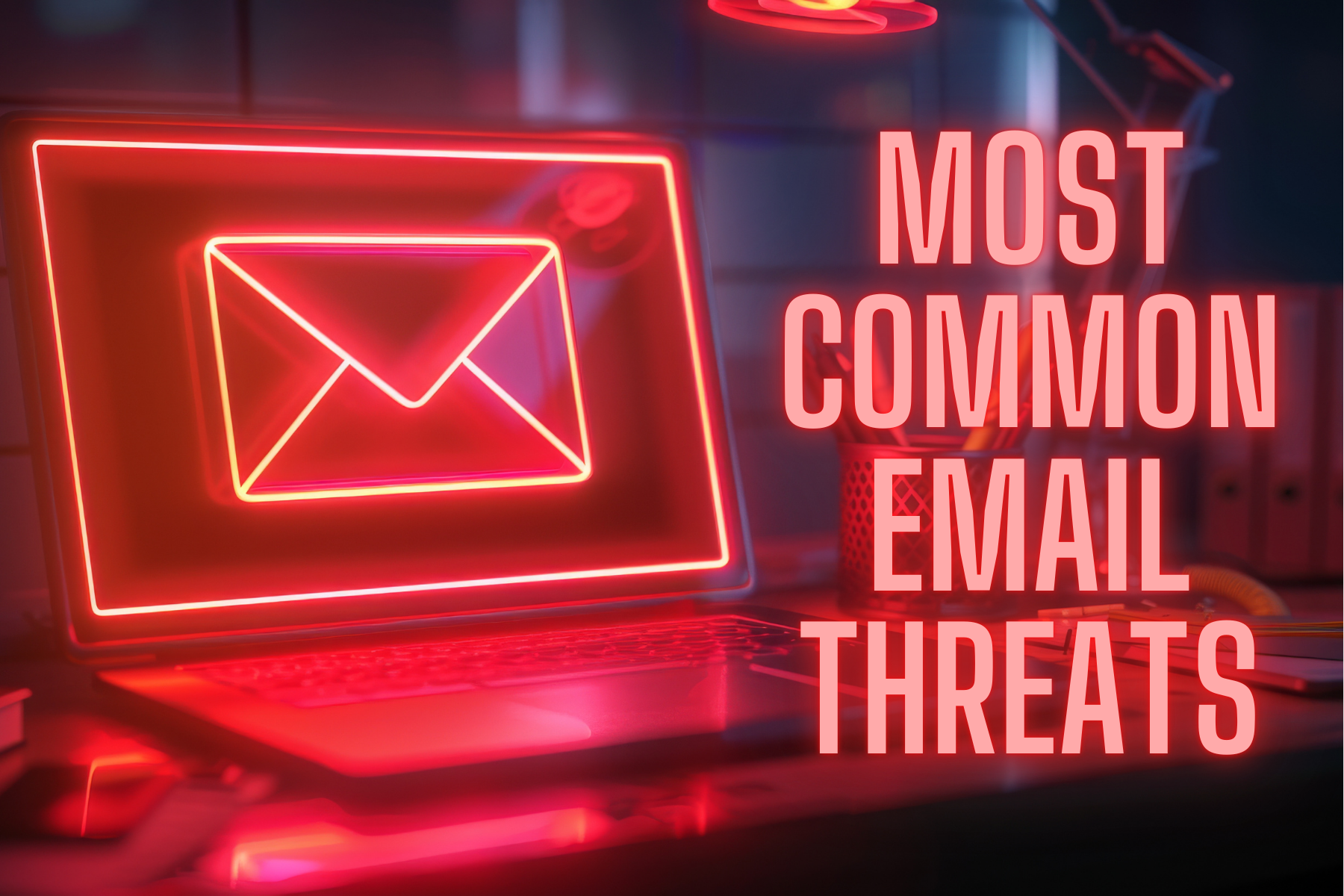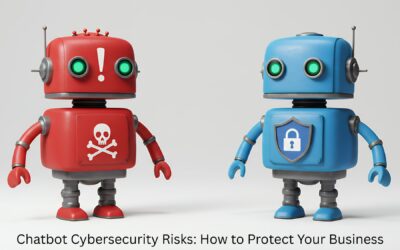Email is the lifeblood of business communication, but it’s also a prime target for cybercriminals. If your team isn’t aware of the threats lurking in their inbox, your business could be at risk. Let’s break down some of the most common email threats and how to guard against them.
1. Phishing Emails: Don’t Take the Bait
Phishing attacks are getting more sophisticated every day. Cybercriminals craft these emails to look exactly like they’re from a legitimate source, sometimes even mimicking the tone and style of the sender. They might use urgent language to create a sense of panic, hoping the recipient will act without thinking.
How to Spot a Phishing Email:
- Check the sender’s address: Sometimes, the email might look like it’s from a trusted source, but if you hover over the sender’s name, the email address might reveal a slight misspelling or a completely different domain.
- Look for generic greetings: Phishing emails often start with “Dear Customer” instead of using your name. If the email doesn’t address you personally, that’s a red flag.
- Watch for grammar mistakes: Legitimate companies take care with their communications. If you notice spelling or grammatical errors, it could be a sign of a phishing attempt.
- Be cautious with attachments and links: Phishing emails often include attachments or links to malicious websites. Always hover over a link before clicking to see the URL, and if it looks suspicious, don’t click on it.
Best Practices:
- Train your staff regularly on how to recognize phishing emails.
- Implement email filtering solutions that flag or block suspicious emails.
- Encourage employees to report phishing attempts to your IT team immediately.
2. Unencrypted Emails: Keep It Secure
When emails are sent without encryption, they can be intercepted by hackers during transmission. This is particularly risky when sending sensitive information such as financial details, personal data, or business secrets. Unencrypted emails are especially vulnerable when using public Wi-Fi or unsecured networks.
Why Encryption Matters:
- Protects Data Integrity: Encryption ensures that even if an email is intercepted, the information inside it cannot be read or altered.
- Compliance with Regulations: Many industries require the encryption of sensitive data to comply with regulations like GDPR, HIPAA, or PCI DSS. Failing to encrypt emails could result in hefty fines.
- Building Trust: Clients and partners expect you to handle their data responsibly. Using encryption shows you take their privacy seriously.
Best Practices:
- Use email encryption tools like S/MIME (Secure/Multipurpose Internet Mail Extensions) or PGP (Pretty Good Privacy).
- Consider using a secure email service that offers end-to-end encryption by default.
- Educate your staff on how and when to use encryption, especially when dealing with sensitive or confidential information.
3. Email Spoofing: It’s Not Who You Think
Email spoofing can be particularly dangerous because it leverages the trust your employees have in known contacts. Spoofing attacks can be part of a broader strategy, such as spear-phishing, where the attacker has done enough research to convincingly impersonate a trusted source.
How Email Spoofing Works:
- Fake Sender: The attacker manipulates the “From” field to make it look like the email is coming from someone within your organization or a trusted partner.
- Convincing Content: The email might contain a request that seems reasonable, like asking for a document or payment. Because it appears to be from someone known, the recipient might comply without question.
- Request for Confidential Info: Often, spoofed emails will ask for sensitive information, such as login credentials or financial details.
Best Practices:
- Use email authentication protocols like SPF (Sender Policy Framework), DKIM (DomainKeys Identified Mail), and DMARC (Domain-based Message Authentication, Reporting & Conformance) to verify the legitimacy of incoming emails.
- Encourage staff to verify unusual requests via a different communication method, like a phone call or direct message.
- Regularly update your email security systems to identify and block spoofed emails.
4. Email Bombing: When Too Much Is Really Too Much
Email bombing, or “mail flooding,” is when someone deliberately sends a massive amount of emails to overwhelm your inbox. This is often a distraction tactic. While you’re busy dealing with the flood of emails, the attacker might be trying to break into your other accounts or carry out another attack unnoticed.
Why It Happens:
- Overwhelm the Target: The goal is to clog up your inbox, making it difficult to find legitimate emails or deal with important tasks.
- Hide Malicious Activity: The attack could be a diversion while the hacker tries to compromise other systems or accounts.
- Annoyance and Disruption: Sometimes, it’s just about causing chaos and making it hard for you to work efficiently.
Best Practices:
- Set up filters and rules in your email client to move suspicious emails to a separate folder or delete them automatically.
- Contact your email provider for assistance; they may be able to block the sender or help mitigate the attack.
- Review your other accounts and systems for signs of unauthorized access or suspicious activity.
- Encourage employees to report email bombs immediately so your IT team can respond quickly.
Email threats are evolving, but with the right knowledge and precautions, your team can stay ahead of the game. By understanding these threats and knowing how to respond, your staff can help protect your business from costly breaches and disruptions. Regular training and a proactive approach to email security will go a long way in keeping your organization safe. We can help.




